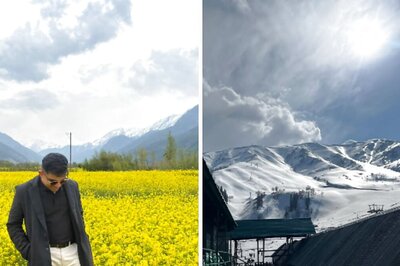
views
Guwahati: Some of the popular traditional practices of water conservation and management followed in the northeast are ‘Zabo’, ‘Cheo-ozihi’ and bamboo-drip irrigation. While water retention is a very difficult task in hilly regions, the northeast experiences extreme flooding in the monsoons and water scarcity during many of the non-rainy months.
Zabo, meaning ‘impounding run-off water’, is a conservation system practised in the Phek region of Nagaland. Villages situated above the river-water level practise this system for domestic and irrigation purposes. During monsoon, rainwater is collected in pond-like structures on hilltops and is then allowed to run-off for different purposes, like growing paddy and fish farming.
It combines water conservation with forestry, agriculture and animal care. It is also known as the ‘Ruza’ system. Rainwater that falls on forested hilltops is collected by channels that deposit the run-off water in pond-like structures created on terraced hillsides. The channels also pass through cattle yards, collecting the dung and urine of animals, before ultimately meandering into paddy fields at the foot of the hills. Ponds created in the paddy field are then used to rear fish and foster the growth of medicinal plants.
Bamboo drip irrigation and ‘Cheo-ozihi’ are similar conservation systems that rely on bamboos. Tribal farmers of the region developed a system for irrigation in which water from perennial springs is diverted to the terrace fields using varying sizes and shapes of bamboo pipes. Best suited for crops requiring less water, the system ensures that small drops of water are delivered directly to the roots of the plants. This ancient system is used by the farmers of Khasi and Jaintia hills to drip-irrigate their black pepper cultivation.
‘Cheo-ozihi’ is a method adopted by locals of Nagaland’s Angami village. The Mezii river flows through the area. All these conservation systems are over two-centuries-old. These methods involve tapping water from hilltop streams and springs with the help of long channels and bamboo pipes and diverting it to areas at different heights for irrigation.


















Comments
0 comment